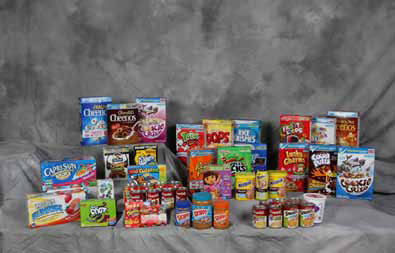What are we to think about Walmart’s healthy food initiatives?
In a press conference attended by Michelle Obama, Walmart today said it will do five things:
- Work with processed food suppliers to reduce sodium, sugars, and trans fat in hundreds of foods by 2015
- Develop its own front-of-package seal to identify healthier products
- Make healthier processed foods more affordable
- Put a new, different kind of Walmart store in low-income “food deserts”
- Increase charitable support for nutrition programs
I’ve been on the phone all day with interviewers, most of them totally focused on the first two. Walmart has established its own nutrition criteria for judging its own products. These seem generous and not particularly challenging, and this is just what Pepsi, Kraft, and other companies have been doing. These criteria are only slightly better.
The idea that Walmart is going to do its own front-of-package label to identify those products is particularly annoying. They are doing this just when the Institute of Medicine and FDA are trying to establish research-based criteria for front-of-package labels. So here is one more company trying to preempt FDA regulations.
When I asked Walmart representatives about this, they told me that the FDA moves slowly and the public needs this information now. Sorry. I don’t buy that.
The next two initiatives are much more interesting and have much greater potential to do some good. Walmart says it will price better-for-you processed foods lower than the regular versions and will develop its own supply chain as a means to reduce the price of fruits and vegetables. This sounds good, but what about the downside? Will this hurt small farmers? Walmart didn’t provide many details and we will have to see how this one plays out.
And then there is the one about putting smaller Walmart stores into inner cities in order to solve the problem of “food deserts.” This also sounds good—and it’s about time groceries moved into inner cities—but is this just a ploy to get Walmart stores into places where they haven’t been wanted? Will the new stores drive mom-and-pop stores out of business? Here too, Walmart is short on details.
None of the reporters seems to be connecting these initiatives with Walmart’s dismal history of low wages and poor working conditions. Will these change for the better?
Walmart is not a social service agency. It is a business and a hugely successful one. It outsells the largest grocery chains in America by a factor of two. Today’s New York Times says that 16% of U.S. sales of Kraft products are at Walmart stores. PepsiCo admits to 10%. These are huge numbers.
Walmart can get whatever it wants from suppliers—and even get Mrs. Obama to endorse its actions. That’s power.
Whether these initiatives will do anything for health remains to be seen. They will certainly put pressure on other suppliers and stores to tweak their products. I don’t think that’s good enough.
I’ll say it again: a better-for-you processed food is not necessarily a good choice.
That’s why I think the most important of these initiatives is the one to reduce the price of fruits and vegetables. That could make a real difference.


